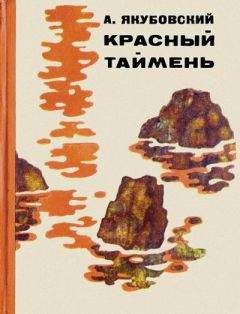165. Judd L. L., Akiskai H. S., Мaser J. D. et al. A prospective 12-year study of subsyndromal and syndromal depressive symptoms in unipolar major depressive disorders // Arch. Gen. Psychiatry. 1997. Vol. 55. P. 694–700.
166. Kaplan H., Sadock J. Клиническая психиатрия. М., 1998. C.278–360.
167. Katon W., Von Korff M., Lin E. et al. Stepped collaborative care for primary care patients with persistent symptoms of depression: a randomized trial // Arch. Gen. Psychiatry. 1999. Vol. 56. P. 1109–1115.
168. Katzelnick D. J., Simon G. E., Pearson S. D. et al. Randomized trial of a depression management program in high utilizers of medical care // Arch. Fam. Med. 2000. Vol. 9. P. 345–351.
169. Kessler R. C., McGonagle K. A., Zhao S. et al. Lifetime and 12-month prevalence of DSM-III-R psychiatric disorders in the United States: results from the National Comorbidity Survey // Arch. Gen. Psychiatry. 1994. Vol. 51. P. 8–19.
170. Kessler R. C., Frank R. G. The impact of psychiatric disorders on work loss days // Psychol. Med. 1997. Vol. 27. Р. 861–873.
171. Kielholz P. Psychische krankhut n. Stress // Schweis. Arch. Neurol. Psychiatr. 1977. Bd.121. № 1. P.9–19.
172. Kielholz P. Chronisce endogene Depressionen // Chronische endogene Psychosen / Hrsg. H. von Kranz, K. Heinrich. Stutgart, 1973. S.5–7.
173. Kielholz P. Die Depression in der taglichen Praxis. Bern, 1974.
174. Kind P., Sorensen J. Modeling the cost-effectiveness of the prophylactic use of SSRIs in the treatment of depression // Int. Clin. Psychopharmacol. 1995. Vol. 10. Suppl. 1. P. 41–48.
175. Kind P., Sorensen J. The costs of depression // Int. Clin. Psychopharmacol. 1993. Vol. 7. P. 191–195.
176. Kowacs M., Deinberg T. L., Crouse-Novar M. A. et al. Depressive disorders in childhood // Arch. Gen. Psychiat. 1984. Vol.41. P.223–237.
177. Kraepelin E. Psychiatrie. 8 Aufl Bd. 1–4. Leipzig: Barth, 1909–1915.
178. Kupfer D. J., Frank E. Maintenance therapy for chronic depression // Arch. Gen. Psychiatry. 1996. Vol. 53. P. 775–776.
179. Lader M. H., Wing L. Physiological measures in agitated and retarded depressed patients // J. Psychiatr. Res. 1969. Vol.7 (2). P.89–100.
180. Leonhard K. Aufteilung der Endogenen Psychosen. Berlin, 1957.
181. Lepine L. P., Gastpar M., Mendlewicz J. et al. Depression in the community: the first pan-European study DEPRES (Depression Research in European Society) // Int. Clin. Psychopharmacol. 1997. Vol. 12. P. 19–29.
182. Lesperance F., Frasure-Smith N. Depression in patients with cardiac disease: a practical review // J. Psychosom. Res. 2000. Vol. 48. Р. 379–391.
183. Levy M. L., Cummings J. L., Fairbanks L. A. et al. Apathy is not depression // J. Neuropsychiatry Clin. Neurosci. 1998. Vol.10 (3). P.314–319.
184. MacDonald T. M., Reid I. C., McMahon A. D. Patients receive an inadequate dose of antidepressants for an inadequate period // Br. Med. J. 1997. Vol. 315. P. 56–58.
185. Marin R. S. Differential diagnosis and classification of apathy // Am. J. Psychiatry. 1990. Vol.147 (1). P.22–30.
186. Marin R. S, Butters M. A., Mulsant B. H. et al. Apathy and executive function in depressed elderly // J. Geriatr. Psychiatry Neurol. 2003. Vol.16 (2). P.112–116.
187. Marin R. S., Firinciogullari S., Biedrzycki R. C. The sources of convergence between measures of apathy and depression // J. Affect. Disord. 1993. Vol.28 (1). P.7–14.
188. McManus P., Mant A., Mitchell P. et al. Use of antidepressants by general practitioners and psychiatrists in Australia // Austral. N. Z. J. Psychiatry. 2003. Vol. 37. P. 184–189.
189. Menier J., Lfo P. Privative syndrome of brain-injured patients (aboulia, asthenia, apathy, ataraxia) // Ann. Med. Psychol. (Paris).1980. Vol. 138. P.261–275.
190. Montgomery S. A., Kasper S. Comparison of compliance between selective serotonin reuptake inhibitors and tricyclic antidepressants: a meta-analysis // Int. Clin. Psychopharmacol. 1995. Vol. 9. Suppl. 4. P. 33–40.
191. Mueller T. I., Leon A. C., Keller M. B. et al. Recurrence after recovery from major depressive disorder during 15 years of observational follow-up // Am. J. Psychiatry. 1999. Vol. 156. P. 1000–1006.
192. Murray J. L., Lopez A. D. (Eds). The global burden of disease: a comprehensive assessment of morality and disability from disease. Injuries and risk factors in 1990 and projected to 2020 (Summury). WHO, World Bank, Harvard School of Public Health, 1996.
193. Nelson J., Charney D. The symptoms of Major Depressive illness // Am. J. Psychiatr. 1981. Vol.138. № 1. P.1–13.
194. Nuijten M., Hardens M., Souetre E. A Markov process analysis comparing the cost effectiveness of maintenance therapy with citalopram versus standard therapy in major depression // Pharmacoеconomics. 1995. Vol. 8. P. 159–168.
195. Okasha A., Kamel M., Khalil A. et al. Academic difficulty among male Egyptian university students. I. Association with psychiatric morbidity // Br. J. Psychiatry. 1985. Vol.146. P.140–144.
196. Oliveira-Souza R. D., Figueiredo W. M. Multimodal iatrogenic apathy // Arq. Neuropsiquiatr. 1996. Vol.54. P.216–221.
197. Ormel J., Von Korff M., Oldehinkel A. J. et al. Onset of disability in depressed and non-depressed primary care patients // Psychol. Med. 1999. Vol. 29. P. 847–853.
198. Ozaki S., Wada K. Amotivational syndrome in organic solvent abusers // Nippon Yakurigaku Zasshi. 2001. Vol. 117. P.42–48.
199. Parikh S. V., Lesage A. D., Kennedy S. H. et al. Depression in Ontario: under-treatment and factors related to antidepressant use // J. Affect. Disord. 1999. Vol. 52. P. 67–76.
200. Payk Th. R. Therapy of depressive psychoses // Ther. Ggw. 1977. Vol.116 (10). P.1816–1826.
201. Paykel E. S., Brugha T., Fryers T. Size and burden of depressive disorders in Europe // Eur. Neuropsychopharm. 2005. Vol. 15. P. 411–423.
202. Picat G. Conduit a tenir devan un etat depressif // Arch. Med. Norm. 1975. Vol.12. P.583–590.
203. Post F. The management and nature of depressive illnesses in late life: a follow-through study // Br. J. Psychiatry. 1972. Vol. 121 (563). P.393–404.
204. Rabkin J. G., Ferrando S. J., Van Gorp W. et al. Relationships among apathy, depression, and cognitive impairment in HIV/AIDS // J. Neuropsychiatry Clin. Neurosci. 1999. Vol. 12. P.451–457.
205. Rice D. P., Miller L. S. The economic burden of affective disorders // Br. J. Psychiatry. 1995. Vol. 166. Suppl. 27. P. 34–42.
206. Roth M. Depressive states and their borderlands: classification, diagnosis and treatment // Compr. Psychiatry. 1960. Vol.1. P.135–155.
207. Roy-Byrne P. P., Stang P., Wittchen H. U. et al. Lifetime panicdepression comorbidity in the national comorbidity survey. Association with symptoms, impairment, course and help-seeking // Br. J. Psychiatry. 2000. Vol. 176. P. 229–235.
208. Rupp A. The economic consequences of not treating depression // Br. J. Psychiatry. 1995. Vol. 166. Suppl. 27. P. 29–33.
209. Sandyk R., Pardeshi R. The relationship between ECT nonresponsiveness and calcification of the pineal gland in bipolar patients // Int. J. Neurosci. 1990. Vol.54 (3–4). P.301–306.
210. Sax K. W., Strakowski S. M., Keck P. E., Upadhyaya V. H. Relationships among negative, positive, and depressive symptoms in schizophrenia and psychotic depression // Br. J. Psychiatry. 1996. Vol.168. № 1. P.68–71.
211. Schorer C. C. Report of gipomanic exitement with Imipramin Treatment of depression // Amer. J. Psychiatr. 1960. Vol.116. № 9. P.844–845.
212. Simon G. E., Fishman P. Cost implications of initial antidepressant selection in primary care // Pharmacoeconomics. 1998. Vol. 13. P. 61–70.
213. Simon G. E., Von Korff M., Barlow W. Health care costs of primary care patients with recognized depression // Arch. Gen. Psychiatry. 1995. Vol. 52. P. 850–856.
214. Sterrenburg C. M., Loonen A. J., Bakker J. B. Polyfarmacie en irrationele combinaties van psychofaraca bij verblijfspatienten in het APZ: kunstfout of onvermijdelijk? // Tijdschrift voor Psychiatric. 2000. Vol. 42. P. 565–574.
215. Tellenbach H. Melancholy: History of the Problem, Endogeneity, Typology, Pathogenesis, Clinical Considerations. Pittsburg: Duquesne University Press, 1961.
216. Ustun T. B. The global burden of mental disorders // Am. J. Publ. Health. 1999. Vol. 89. P. 1315–1318.
217. Van der Wurff F. B., Stek M. L., Hoogendijk W. J., Beekman A. T. The efficacy and safety of ECT in depressed older adults: a literature review // Int. J. Geriatr. Psychiatry. 2003. Vol.18 (10). P.894–904.
218. Verkaik R., Van Weert J. C. M., Francke A. L. The effects of psychosocial methods on depressed, aggressive and apathetic behaviors of people with dementia: a systematic review // Int. J. Geriatr. Psychiatry. 2005. Vol.20 (4). P.301–314.
219. Watson D., Tellegen A. Toward a Consensual Structure of mood // Psychol. Bull. 1985. Vol.98. № 2. P.219–235.
220. Weissman M. M., Bland R. C., Canino G. J. et al. Cross-national epidemiology of major depression and bipolar disorder // JAMA. 1996. Vol. 276. P. 293–299.
221. Weitzner M. A., Kanfer S., Booth-Jones M. Apathy and pituitary disease: it has nothing to do with depression // J. Neuropsychiatry Clin. Neurosci. 2005. Vol.17 (2). P.159–166.
222. Wittchen H. U. Отчет рабочей группы Европейской Коллегии по нейропсихофармакологии (ECNP) и вопросам распространенности психических расстройств в Европе и связанным с ним бременем (реферат) // Обозрение психиатрии и медицинской психологии им. В. М. Бехтерева. 2005. № 4. С. 42–46.
223. World Health Organization. Choosing interventions: effectiveness, quality, costs, gender, and ethics (EQC). Global programme on evidence for health policy (GPE). Geneva: WHO, 2000.
224. World Mental Health Survey Consortium, 2004. Prevalence, severity, and unmet need for treatment of mental disorders in the World Health Organization World Mental Health Surveys // JAMA. 2004. Vol. 291. P. 2581–590.
225. Wulsin L. R., Vaillant G. E., Wells V. E. A systematic review of the mortality of depression // Psychosom. Med. 1999. Vol. 61. P. 6–8.
226. Zung W., Durham N. A self-Rating Depression Scale // Arch. Gen. Psychiatr. 1965. Vol.12. № 1. P.63–71.
ДР – депрессивные расстройства
ИМАО – ингибитор моноаминоксидазы
ЛС – лекарственное средство
ПНД – психоневрологический диспансер
СИОЗС – селективный ингибитор обратного захвата серотонина
СПФ – социальное и психическое функционирование
ТЦА – трициклические антидепрессанты
ЦНС – центральная нервная система
MADRS – шкала депрессии Монтгомери-Асберга
Цит. по: http://www.psychiatry.ru/lib/1/book/22/chapter/4
Цит. по: http://www.medklassika.ru/gannushkin_1933/17/
Цит. по: http://www.psychiatry.ru/lib/1/book/93/chapter/36
См.: http://neuronews.com.ua/page/depressiya-i-demenciya-u-pacientov-pozhilogo-vozrasta
Цит. по: http://helpiks.org/5–51885.html
Цит. по: Hasselmo M. E., Stern C. E. Theta rhythm and the encoding and retrieval of space and time. NeuroImage 85, 2014. P.656–666.
Цит. по: http://www.psychiatry.ru/lib/54/book/10/chapter/7
Цит.: http://10-cabinet.ru/index.php?option=com_content&task=view&id=138&Itemid=35
Цит. по: http://depressiya.net/depressia-literatura/bobrov-a-s-endogennaya-depressiya/fenomen-dissociacii-pri-depressii





